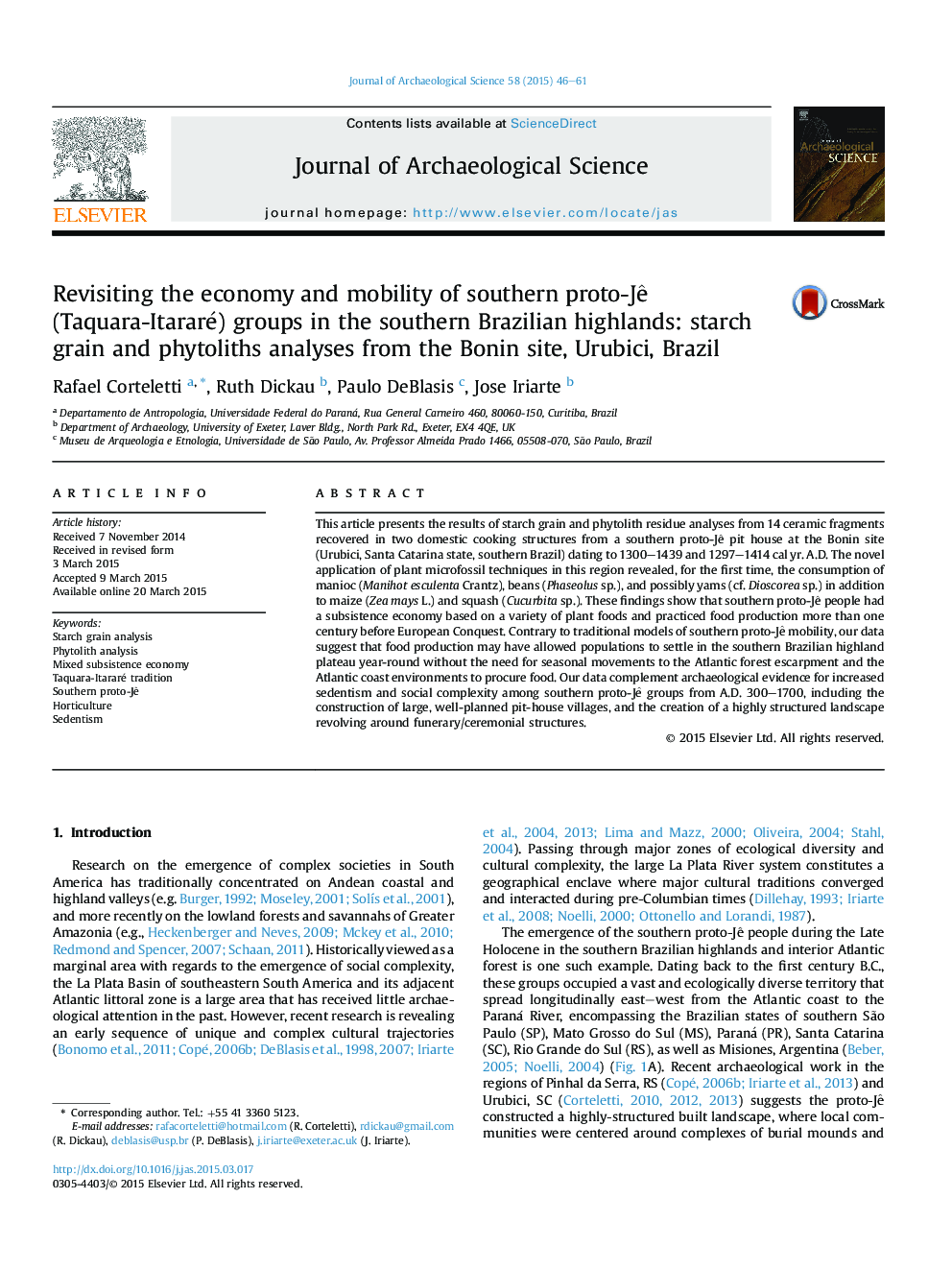| Article ID | Journal | Published Year | Pages | File Type |
|---|---|---|---|---|
| 7441864 | Journal of Archaeological Science | 2015 | 16 Pages |
Abstract
This article presents the results of starch grain and phytolith residue analyses from 14 ceramic fragments recovered in two domestic cooking structures from a southern proto-Jê pit house at the Bonin site (Urubici, Santa Catarina state, southern Brazil) dating to 1300-1439 and 1297-1414 cal yr. A.D. The novel application of plant microfossil techniques in this region revealed, for the first time, the consumption of manioc (Manihot esculenta Crantz), beans (Phaseolus sp.), and possibly yams (cf. Dioscorea sp.) in addition to maize (Zea mays L.) and squash (Cucurbita sp.). These findings show that southern proto-Jê people had a subsistence economy based on a variety of plant foods and practiced food production more than one century before European Conquest. Contrary to traditional models of southern proto-Jê mobility, our data suggest that food production may have allowed populations to settle in the southern Brazilian highland plateau year-round without the need for seasonal movements to the Atlantic forest escarpment and the Atlantic coast environments to procure food. Our data complement archaeological evidence for increased sedentism and social complexity among southern proto-Jê groups from A.D. 300-1700, including the construction of large, well-planned pit-house villages, and the creation of a highly structured landscape revolving around funerary/ceremonial structures.
Related Topics
Physical Sciences and Engineering
Materials Science
Materials Science (General)
Authors
Rafael Corteletti, Ruth Dickau, Paulo DeBlasis, Jose Iriarte,
